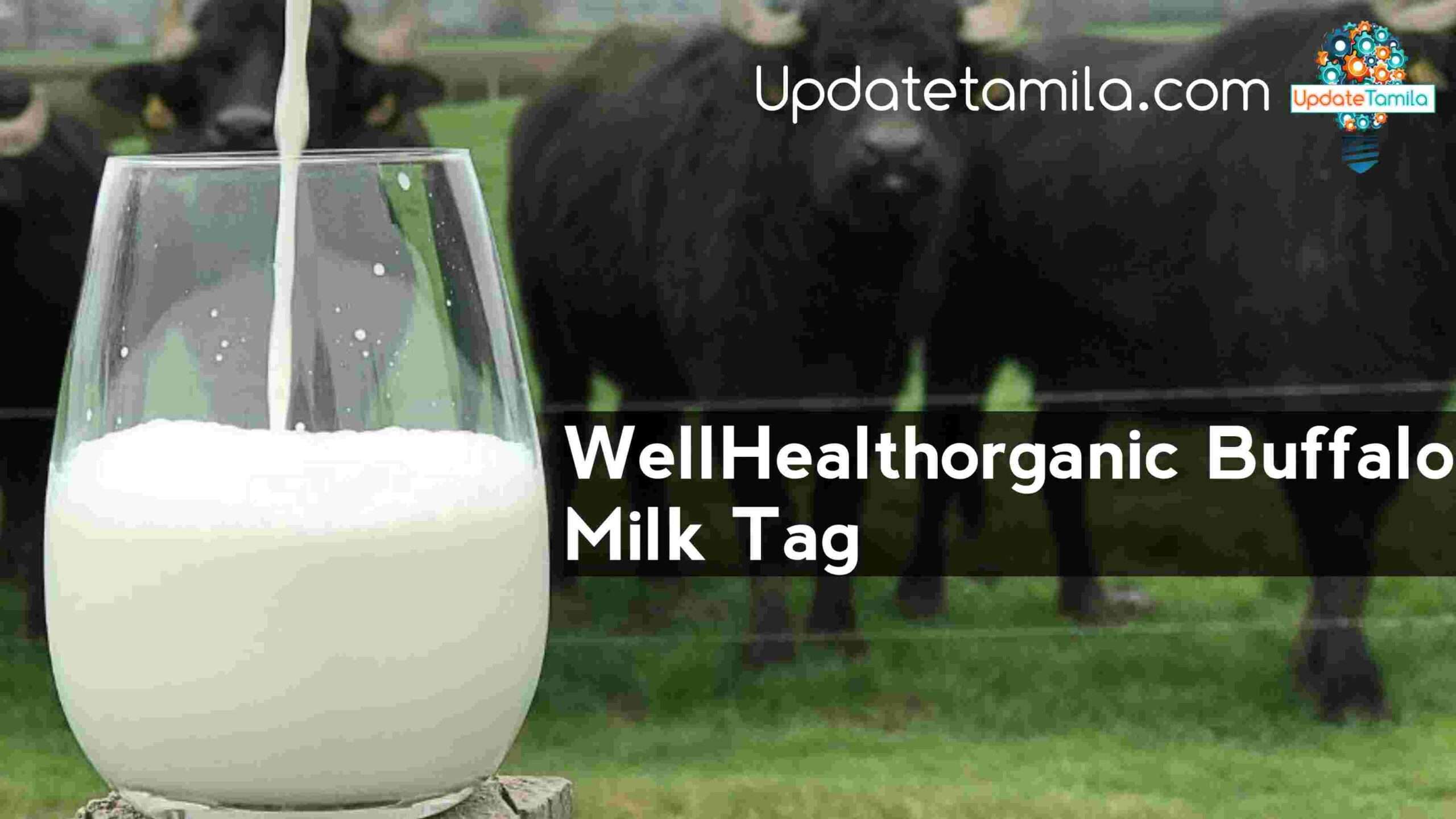Table of Contents
The Nutritional Powerhouse: A Comprehensive Guide to WellhealthOrganic Buffalo Milk Tag
WellhealthOrganic Buffalo Milk Tag is often overshadowed by its more popular counterpart, cow milk. However, it holds a treasure trove of nutritional benefits and unique properties that make it a compelling choice for health enthusiasts and culinary experts alike.
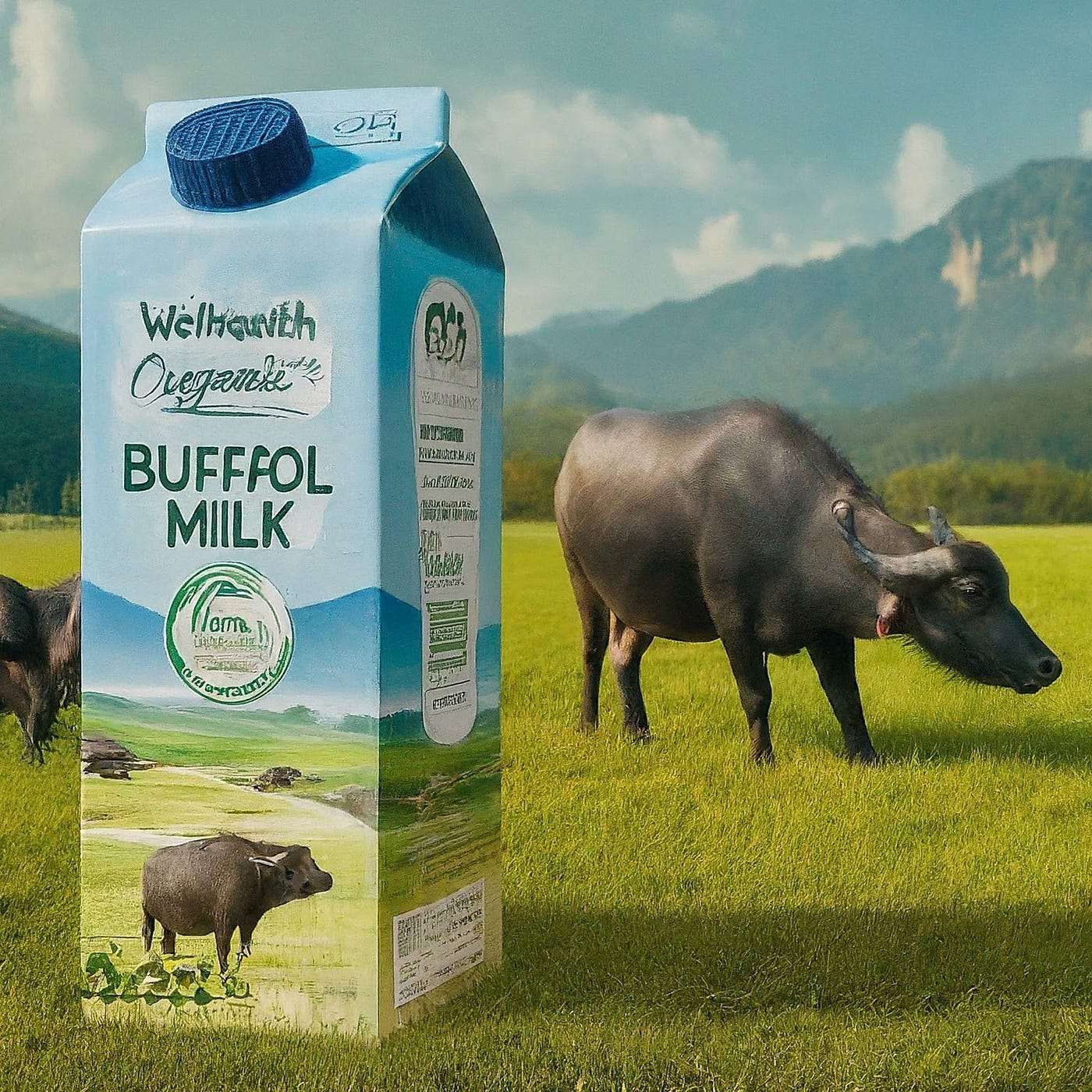
What is Buffalo Milk?
Buffalo milk is derived from domesticated water buffaloes, primarily the river buffalo species. It is widely consumed in parts of Asia, particularly in India, Pakistan, and Southeast Asian countries. Buffalo milk has a rich, creamy texture and a slightly sweet taste, making it a favorite for many traditional dishes and dairy products.
Nutritional Profile of Buffalo Milk
Buffalo milk is a powerhouse of essential nutrients, including proteins, fats, vitamins, and minerals. Here’s a detailed breakdown:
- Protein: Buffalo milk contains about 10-11% more protein than cow milk. The high protein content supports muscle growth and repair, making it ideal for athletes and those needing more protein in their diet.
- Fat: Buffalo milk is richer in fat, with approximately 7-8% fat content compared to 3-4% in cow milk. This higher fat content gives it a creamier texture and is beneficial for weight gain and providing a concentrated source of energy.
- Vitamins and Minerals: Buffalo milk is a rich source of calcium, magnesium, phosphorus, and vitamin A. These nutrients are essential for bone health, immune function, and overall well-being.
- Lactose: It contains slightly less lactose than cow milk, making it more suitable for individuals with mild lactose intolerance.
Health Benefits of WellHealthOrganic Buffalo Milk Tag
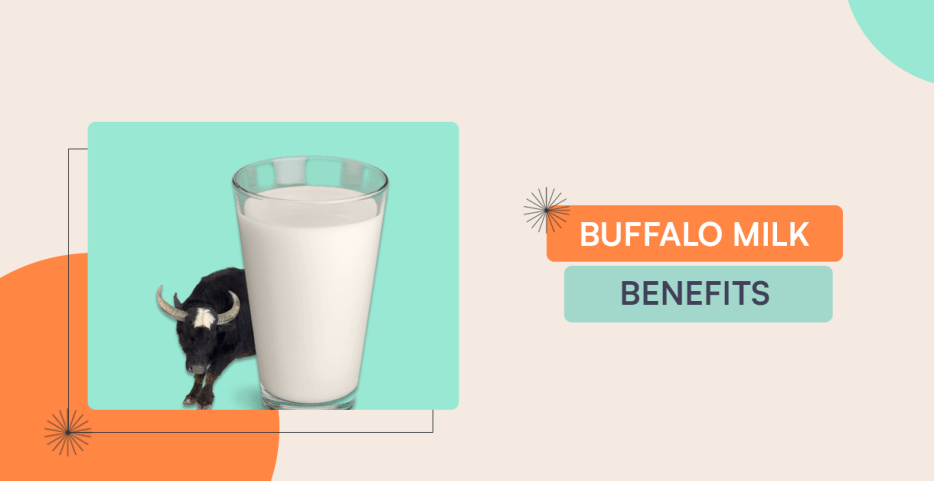
- Rich in Calcium: Buffalo milk provides a higher amount of calcium compared to cow milk, promoting stronger bones and teeth. It helps in preventing osteoporosis and maintaining bone density.
- Better for Lactose Intolerance: Due to its lower lactose content, buffalo milk can be easier to digest for people with mild lactose intolerance, reducing discomfort and digestive issues.
- Higher Fat Content: The high fat content in buffalo milk makes it an excellent choice for individuals looking to gain weight or seeking a high-calorie diet for energy-intensive activities.
- Boosts Immune System: The presence of bioactive compounds like lactoferrin and immunoglobulins in buffalo milk can help enhance the immune system and protect against infections.
- Rich in Antioxidants: Buffalo milk contains higher levels of tocopherols (a form of Vitamin E), which act as antioxidants and help in protecting cells from damage caused by free radicals.
WellhealthOrganic Buffalo Milk Tag Fitness Benefits

Provides Sustained Energy
Buffalo milk provides its consumers with a balance between healthy fats and proteins, making it an excellent fuel source to stay powered. It is ideal to drink before working out or exercising regularly as it will help you maintained energy while you’re working or exercising and retrieve back energy fast after exercise.
Aids in Weight Management
This milk, having a more significant amount of fat, could still play an essential role in a balanced diet related to weight management. Proteins and fats present in buffalo milk provide satiety, which limits one from overeating, thereby assisting in controlling weight.
Enhances Endurance
Buffalo milk is whole of nutrients which increase stamina and endurance. It can also be used to fuel enhanced performance due to its richness in nutrient ingredients that enable the body to keep pumping throughout extended exercise sessions.
Culinary Delights with WellHealthorganic Buffalo Milk Tag
While you can undoubtedly indulge in WellHealthorganic Buffalo Milk straight from the glass, its unique properties make it versatile for a host of culinary creations. Here are some tempting ideas:
Luxurious Lattes and Smoothies
The richness of buffalo milk makes for a wonderfully creamy morning latte or post-workout smoothie, adding a subtle sweetness.
Culinary Uses of Buffalo Milk
Buffalo milk’s rich and creamy texture makes it a versatile ingredient in various culinary applications. Here are some popular uses:
- Cheese: Buffalo milk is used to make mozzarella, one of the most beloved cheeses worldwide. The high fat content gives it a unique texture and flavor.
- Yogurt and Curd: The creaminess of buffalo milk makes for exceptionally thick and rich yogurt and curd, often used in Indian cuisine.
- Desserts: Buffalo milk is a key ingredient in many traditional desserts like kheer (rice pudding), rabri (thickened milk dessert), and ice cream.
- Butter and Ghee: The high fat content is perfect for making rich butter and ghee, commonly used in Indian cooking.
Buffalo Milk vs. Goat Milk: A Head-to-Head Comparison
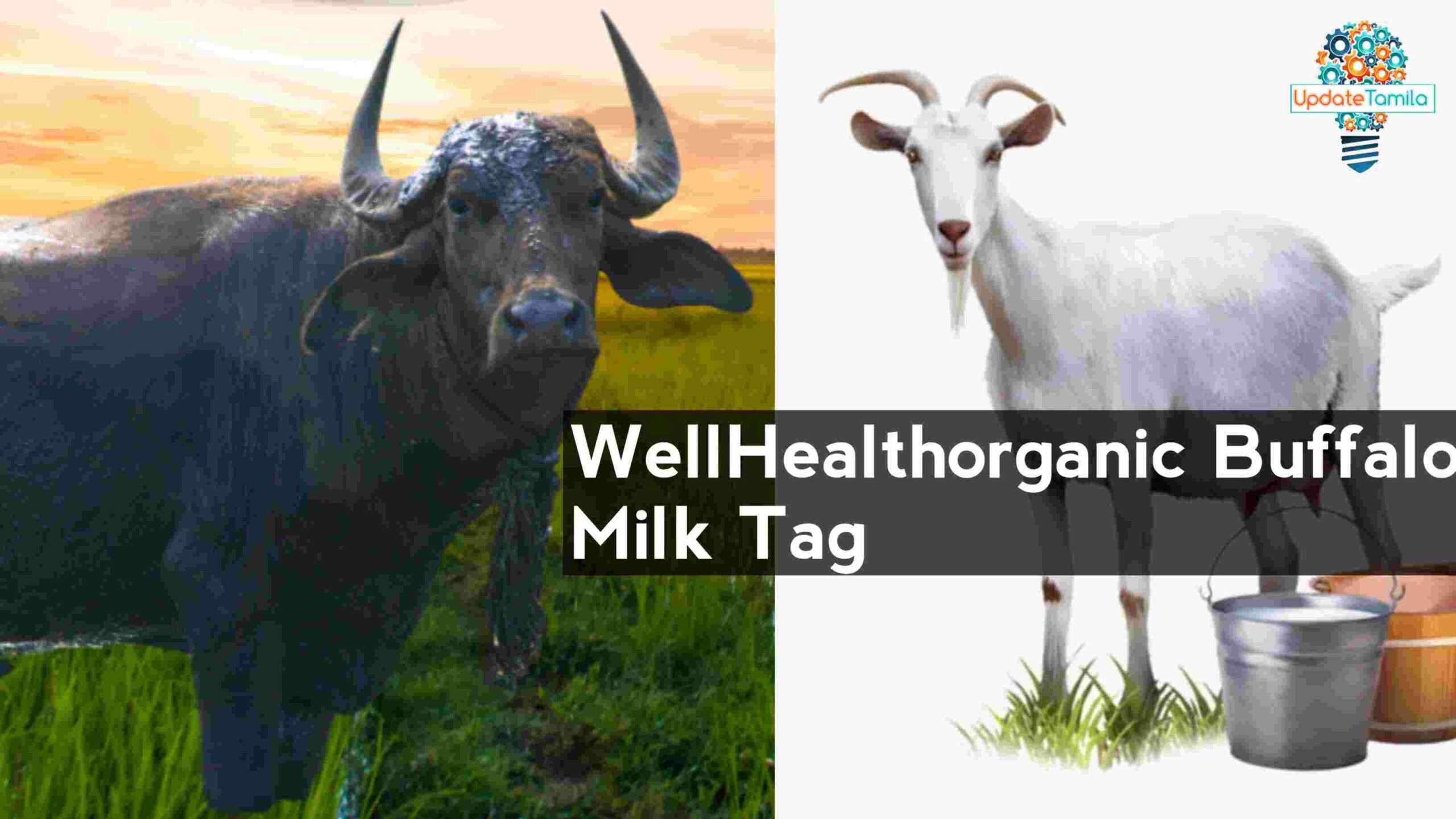
Nutritional Profile
Both buffalo milk and goat milk offer distinct nutritional benefits, making them valuable additions to a balanced diet. Here’s a detailed breakdown of their nutritional content:
Buffalo Milk
- Protein: Rich in protein, buffalo milk contains about 10-11% more protein than cow milk. This makes it excellent for muscle repair and growth.
- Fat: Buffalo milk is high in fat, with around 7-8% fat content, which provides a rich and creamy texture.
- Vitamins and Minerals: It is abundant in calcium, magnesium, phosphorus, and vitamin A. These nutrients are crucial for bone health, immune function, and overall well-being.
- Lactose: Contains slightly less lactose than cow milk, making it somewhat easier to digest for those with mild lactose intolerance.
Goat Milk
- Protein: Goat milk has a slightly lower protein content compared to buffalo milk but is still a good source of high-quality protein.
- Fat: Contains about 4-5% fat, which is less than buffalo milk but more than cow milk. The fat globules in goat milk are smaller, making it easier to digest.
- Vitamins and Minerals: Goat milk is rich in calcium, magnesium, potassium, and vitamin A. It also contains higher levels of vitamin D and essential fatty acids.
- Lactose: Lower in lactose compared to both cow and buffalo milk, making it an excellent option for those with lactose intolerance.
Health Benefits
Both buffalo and goat milk provide a range of health benefits, but there are some differences worth noting:
Buffalo Milk
- Bone Health: High calcium and phosphorus content in buffalo milk supports strong bones and teeth.
- Immune Boost: Contains bioactive compounds like lactoferrin and immunoglobulins that enhance the immune system.
- Weight Gain: The higher fat content is beneficial for those looking to gain weight or require a high-calorie diet.
- Antioxidant Properties: Rich in tocopherols (Vitamin E), which act as antioxidants and protect cells from damage.
Goat Milk
- Digestibility: Easier to digest due to smaller fat globules and lower lactose content. It also has lower allergenicity, making it suitable for people with dairy sensitivities.
- Nutrient Absorption: Contains unique medium-chain fatty acids that are quickly absorbed and utilized by the body, providing quick energy.
- Anti-inflammatory Properties: Goat milk is known for its anti-inflammatory properties, which can help reduce symptoms of gastrointestinal issues like bloating and cramps.
- Skin Health: Rich in vitamin A and essential fatty acids, goat milk can promote healthy skin and is often used in skincare products.
Culinary Uses
Both types of milk have their unique culinary applications due to their distinct flavors and textures:
Buffalo Milk
- Cheese: Buffalo milk is famous for making mozzarella cheese, known for its rich texture and flavor.
- Yogurt and Curd: Its creamy texture makes it perfect for thick, rich yogurt and curd, popular in many Asian cuisines.
- Desserts: Used in traditional desserts like kheer (rice pudding) and rabri (thickened milk dessert) due to its sweet taste and creamy consistency.
- Butter and Ghee: High fat content makes it ideal for producing rich butter and ghee, commonly used in Indian cooking.
Goat Milk
- Cheese: Goat milk is used to make a variety of cheeses, including chèvre, feta, and goat gouda, which are known for their tangy flavor.
- Yogurt: Produces a lighter and tangier yogurt, often favored for its probiotic benefits.
- Drinking Milk: Goat milk has a distinct flavor that is often described as earthy or grassy, which some people prefer over cow or buffalo milk.
- Baking: Its unique flavor can add depth to baked goods, and it works well in recipes requiring a lighter texture.
Potential Drawbacks
While both buffalo and goat milk have numerous benefits, they also come with some potential drawbacks:
Buffalo Milk
- High Caloric Content: The high fat and calorie content may not be suitable for those on a low-fat or calorie-restricted diet.
- Digestibility: Although lower in lactose, the high fat content can make it harder to digest for some individuals.
- Availability: Buffalo milk is not as widely available as cow or goat milk in many regions, making it less accessible.
- Cost: Generally more expensive due to its rich nutrient profile and production costs.
Goat Milk
- Distinct Flavor: The unique flavor of goat milk can be off-putting to some people who are used to cow or buffalo milk.
- Cost: Goat milk can be more expensive than cow milk due to smaller production scales and higher production costs.
- Availability: While more accessible than buffalo milk, goat milk may still be harder to find in some areas compared to cow milk.
Environmental Impact
The environmental impact of milk production is an important consideration, with differences between buffalo and goat milk production:
Buffalo Farming
- Resource Intensive: Requires more land and water compared to goat farming. Buffaloes also produce more methane, contributing to greenhouse gas emissions.
- Adaptability: Buffaloes are resilient animals that can thrive in harsh climates, which can be an advantage in certain regions.
Goat Farming
- Less Resource Intensive: Requires less land and water compared to both cow and buffalo farming. Goats are efficient browsers and can thrive on less nutritious forage.
- Lower Emissions: Goats produce less methane compared to buffaloes and cows, making goat farming a more environmentally friendly option.
WellHealthOrganic Buffalo Milk Tag vs. Cow Milk: A Comparative Analysis
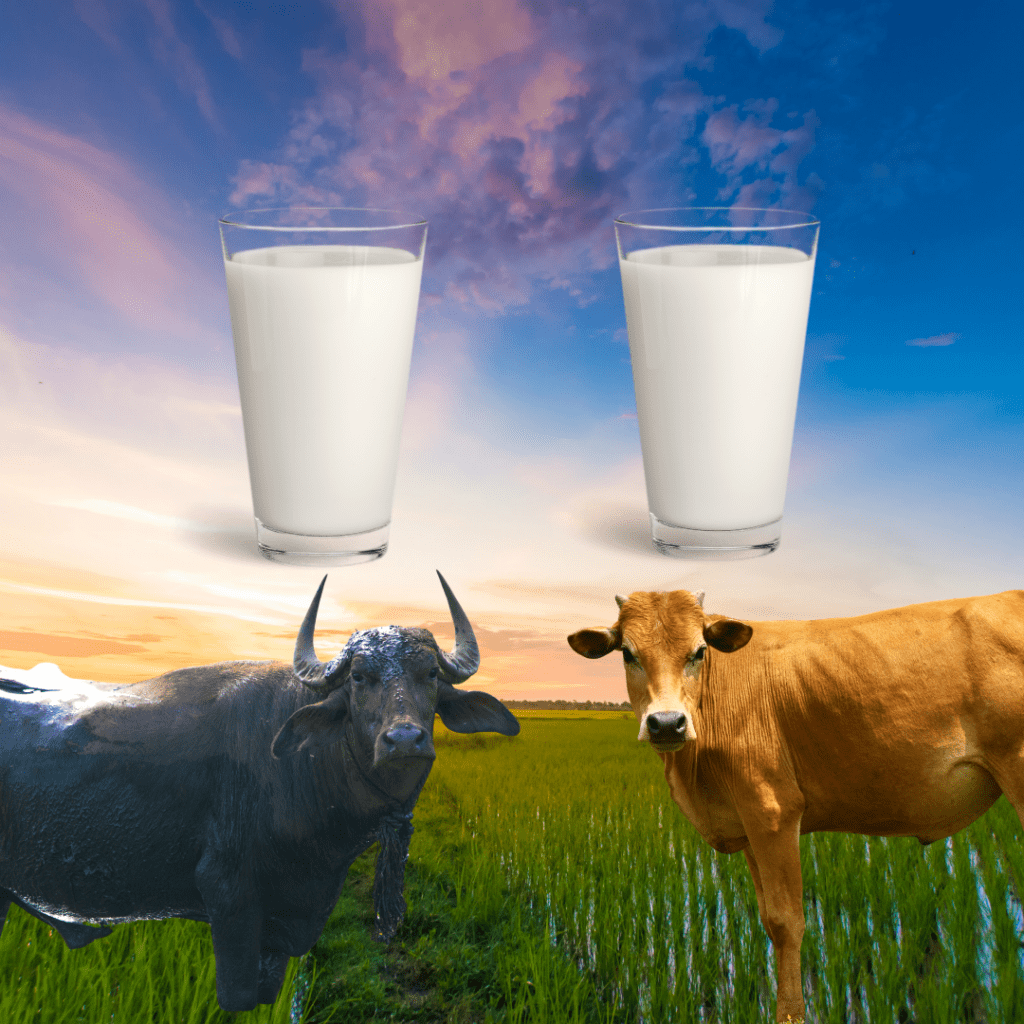
| NUTRIENT | WELLHEALTHORGANIC BUFFALO MILK TAG | COW’S MILK (WHOLE) |
|---|---|---|
| Protein | Higher | Lower |
| Fat | Higher | Higher |
| Calcium | Higher | Lower |
| Vitamin A | Higher | Lower |
| Lactose | Present | Present |
1. Nutritional Content
- Protein: Buffalo milk contains more protein, making it better for muscle repair and growth.
- Fat: Buffalo milk has a higher fat content, offering a richer taste and higher caloric value.
- Vitamins and Minerals: Buffalo milk is richer in calcium, iron, and phosphorus, which are crucial for bone health and overall growth.
2. Lactose Content
- Buffalo Milk: Lower in lactose, potentially easier to digest for those with lactose intolerance.
- Cow Milk: Higher in lactose, which can cause digestive issues for lactose-intolerant individuals.
3. Taste and Texture
- Buffalo Milk: Creamier and richer, making it ideal for dairy products like cheese, yogurt, and ice cream.
- Cow Milk: Lighter and less creamy, preferred for drinking and in recipes that require a lighter consistency.
4. Shelf Life
- Buffalo Milk: Higher peroxidase activity, leading to a longer shelf life compared to cow milk.
- Cow Milk: Shorter shelf life, requires quicker consumption.
5. Environmental Impact
- Buffalo Farming: Generally requires more land and resources compared to cow farming. However, buffaloes can be more resilient and adapt better to harsh climates.
- Cow Farming: Less resource-intensive but has a significant environmental footprint due to methane emissions.
WellHealthOrganic Buffalo Milk Tag Potential Drawbacks
While buffalo milk has numerous benefits, it’s essential to consider some potential drawbacks:
- Higher Caloric Content: The high fat and caloric content may not be suitable for those on a low-fat diet or trying to lose weight.
- Digestibility: Though lower in lactose, the high fat content might make it harder to digest for some individuals compared to cow milk.
- Availability: Buffalo milk is not as widely available as cow milk in many parts of the world, making it less accessible.
- Cost: Due to its rich nutrient profile and production costs, buffalo milk can be more expensive than cow milk.
Conclusion: Is Buffalo Milk Worth the Switch?
Buffalo milk offers a host of nutritional benefits that make it a valuable addition to your diet, especially if you are looking for higher protein, calcium, and fat content. Its creamy texture and rich taste also make it a fantastic choice for culinary applications.
However, it’s essential to consider your dietary needs and preferences. If you’re looking for a low-fat option or have difficulty digesting high-fat dairy products, cow milk might be more suitable. For those with lactose intolerance, the lower lactose content in buffalo milk can be beneficial, but it’s still important to consume it in moderation.
In conclusion, buffalo milk stands out as a nutrient-dense alternative to cow milk, with unique health benefits and culinary versatility. Whether you choose to incorporate it into your diet depends on your specific health goals and taste preferences. Regardless, giving buffalo milk a try could introduce you to a whole new world of dairy goodness.
